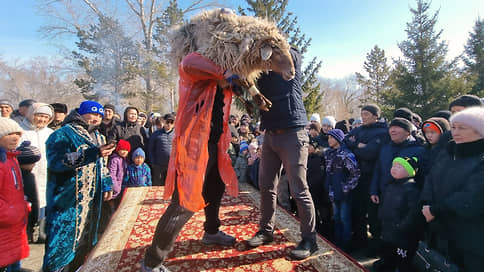Navruz holiday – Iranian and Turkic new year: origins and traditions
[ad_1]

Navruz, the celebration of the arrival of the new year and spring according to the astronomical solar calendar, falls on the period of the spring equinox. In most countries it is celebrated on March 21st.
How the holiday appeared
The holiday originates in Ancient Persia. Initially, Navruz was a Zoroastrian holiday that had no relation to the Islamic tradition. It marked the onset of summer and the defeat of the evil spirit, the destroyer of Ahriman. Navruz was a reminder of the Last Day, which will become the New Day of eternal life. The word “Navruz” itself is translated from Persian as “new day” or “new year”, which symbolizes the beginning of spring and the renewal of nature.
The celebration took place on the eve of the spring equinox, when, according to Zoroastrian beliefs, the souls of the dead returned to their former homes. Nowruz is one of the few Iranian holidays that survived the advent of Islam. It was revived as a secular tradition under the Sevifids (the dynasty that ruled Iran and the South Caucasus in the early 16th to mid-18th centuries).
Since then, rituals associated with Navruz became more complex until the 20th century and were intended to testify to the greatness and power of the government. It spread along the Silk Road among the Iranian and Turkic peoples, and is now celebrated in Afghanistan, Azerbaijan, India, Iran, Iraq, Kyrgyzstan, Kazakhstan, Pakistan, Tajikistan, Turkey, Turkmenistan and Uzbekistan.
How to celebrate Nowruz
For the holiday, they usually clean the house, pay off debts in order to meet spring with a clean home and without the burden of obligations. Traditional dishes and sweets are usually served on the festive table. One of the most famous dishes is samanu, a sweet millet pie that symbolizes wealth and abundance. Other dishes are also prepared; according to tradition, there should be seven products on the table, the names of which begin with the letter C of the Persian alphabet. Candles are placed on the table – fire is considered a force that protects people from evil spirits. Another symbol of Nowruz is sprouted wheat sprouts tied with a red ribbon.
As on Orthodox Easter, on Navruz it is customary to paint eggs and place them on the table. Most often, the shell is made green – the color of renewed nature. In many countries, various festive events are organized, such as concerts, festivals, national games, traditional dances and musical performances. People dress up in national costumes and actively participate in festivities.
In Kyrgyzstan and Kazakhstan, the emphasis is mainly on games popular among nomadic peoples: wrestling, equestrian kok-bora. And in Uzbekistan or Azerbaijan, where a sedentary lifestyle previously prevailed, music and dance ensembles perform.
[ad_2]
Source link








